by Bilal Bahadur
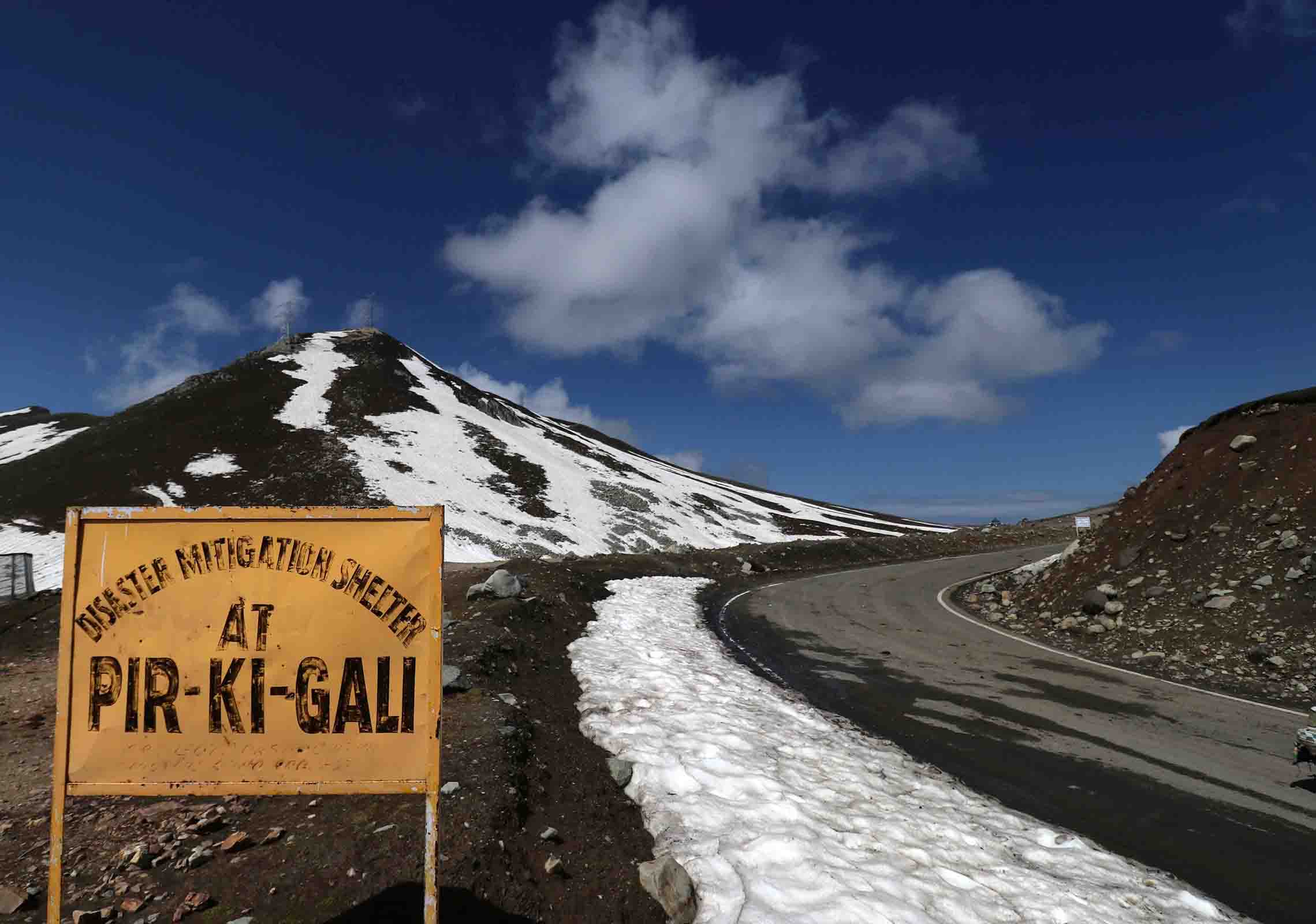
This is the Pir Ki Ghali turn, the top of the pass that separates Kashmir from the Pir Panchal Valley. It usually remains under snow for nearly half of the year. KL Image: Bilal Bahadur
The yearly migration of nomadic Bakerwal tribes towards greener pastures of Kashmir valley is usually a picture-perfect moment. But this migration has turned into a daunting task for these nomadic people as the world is under lockdown.
On June 2, I travelled up to Pir Ki Gali, a treacherous mountain pass connecting Kashmir valley with Pir Panchal region in south Kashmir’s Shopian, to witness the arrival of first such batch of a nomadic tribe.
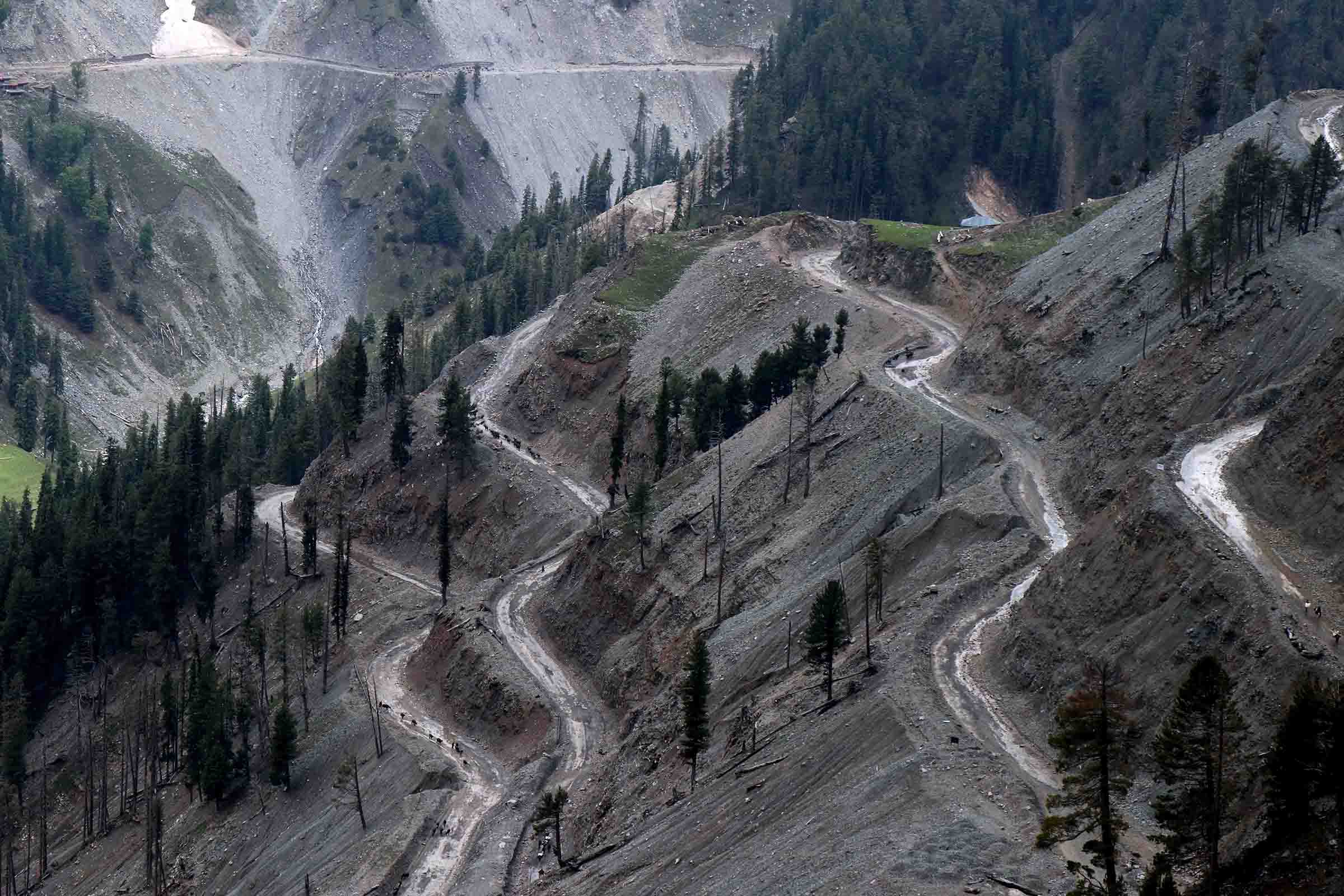
This is the Poonch side of the breathtaking Mughal Road as captured from Pir Ki Gali. KL Image: Bilal Bahadur
Pir Ki Gali is the highest point (11,450 feet) on historic Mughal Road, which used to be the only access route to Kashmir valley with the outside world. The road was made famous by Mughal emperor Jehangir, who travelled with his entourage to Kashmir from his seat of power in Lahore in later part of the sixteenth century. Between Srinagar and Lahore, Mughals constructed fourteen Sarais (resting places), to make the Emperor’s journey to Kashmir valley comfortable and hassle-free.
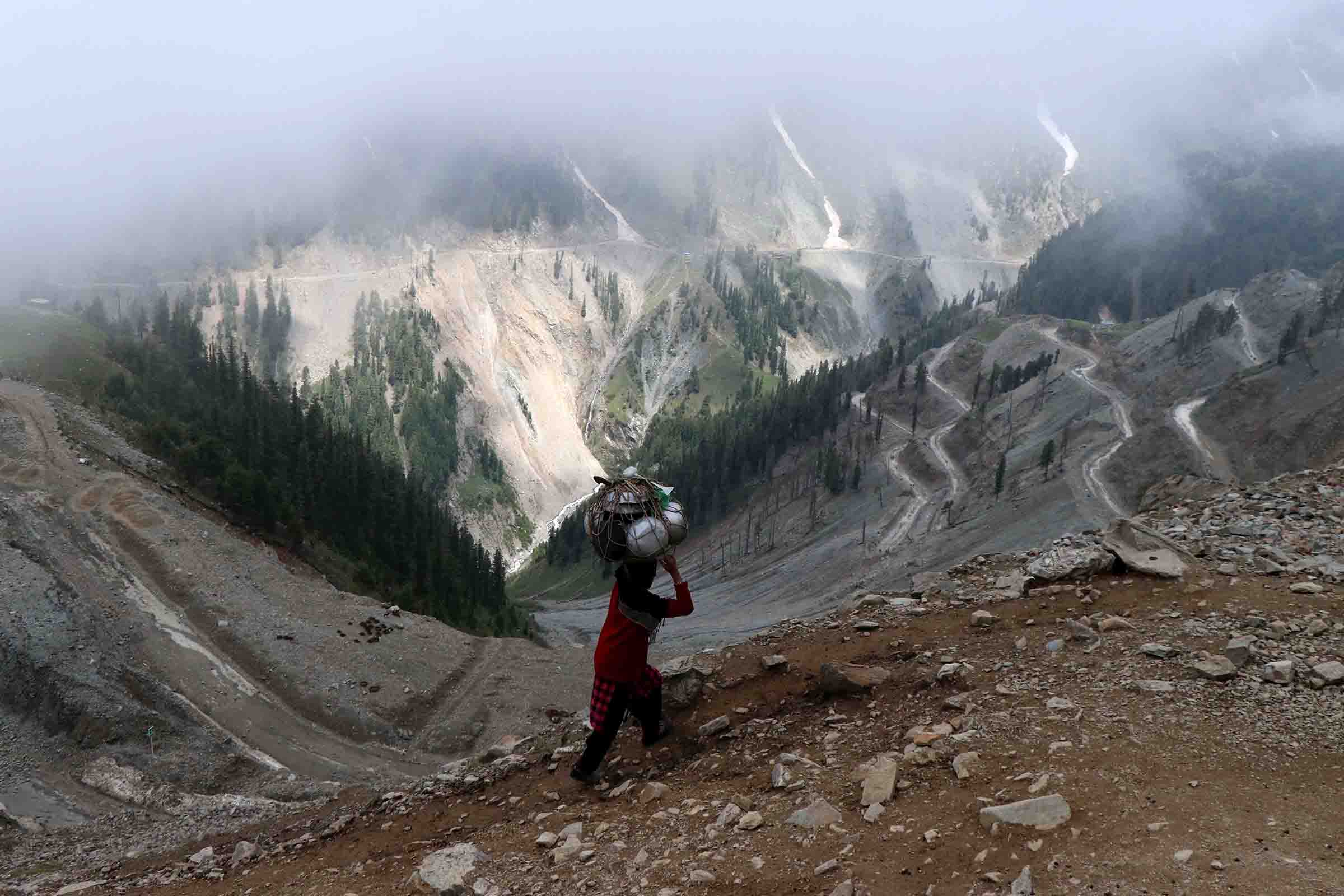
Nature shows its own colours in light and shade as a Bakerwal woman passes the road near Pir Ki Gali. The Bakerwals from Pir Panchal valley migrate with their herds to Kashmir meadows early spring. KL Image: Bilal Bahadur
The ruins of these Sarais, still dot the Mughal road, as they are now used by nomads to shelter themselves and their herd during migration from higher pastures of Rajouri and Poonch.

Three Bakerwal men who ascended the top using the bypass tracks waiting for their flocks to join them. It is too cold at the pass and for most of the year remains below 10 degrees. KL Image: Bilal Bahadur
For a very long time, Mughal road was not in use till a new macadamized road was laid between Shopian and Bafliaz in 2014. The road was hailed as an all-weather road. But as the pass receives record snowfall, the road now is in shambles making it unfit for a journey beyond Pir Ki Gali.
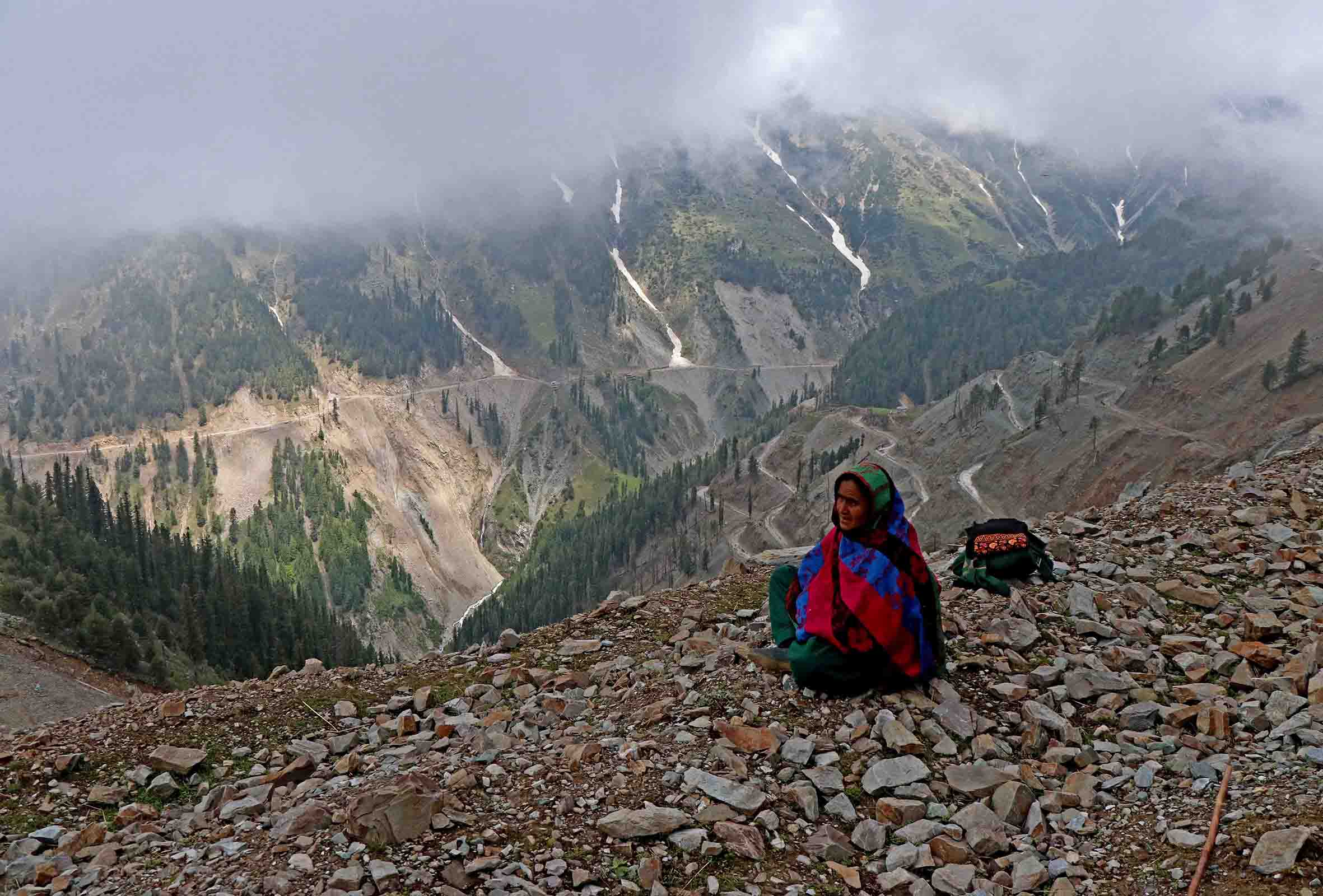
A Bakerwal woman takes rest upon her arrival in Pir Ki Gali after a long a tiring journey from Rajouri. KL Image: Bilal Bahadur
The road that historically was used exclusively for the import of salt from a territory =- now in Pakistan, became Mughal Road after the Mughal annexation of Kashmir. However, after a macadamized road was laid, the road has led to increased interactions between the Pir Panchal region and Kashmir.
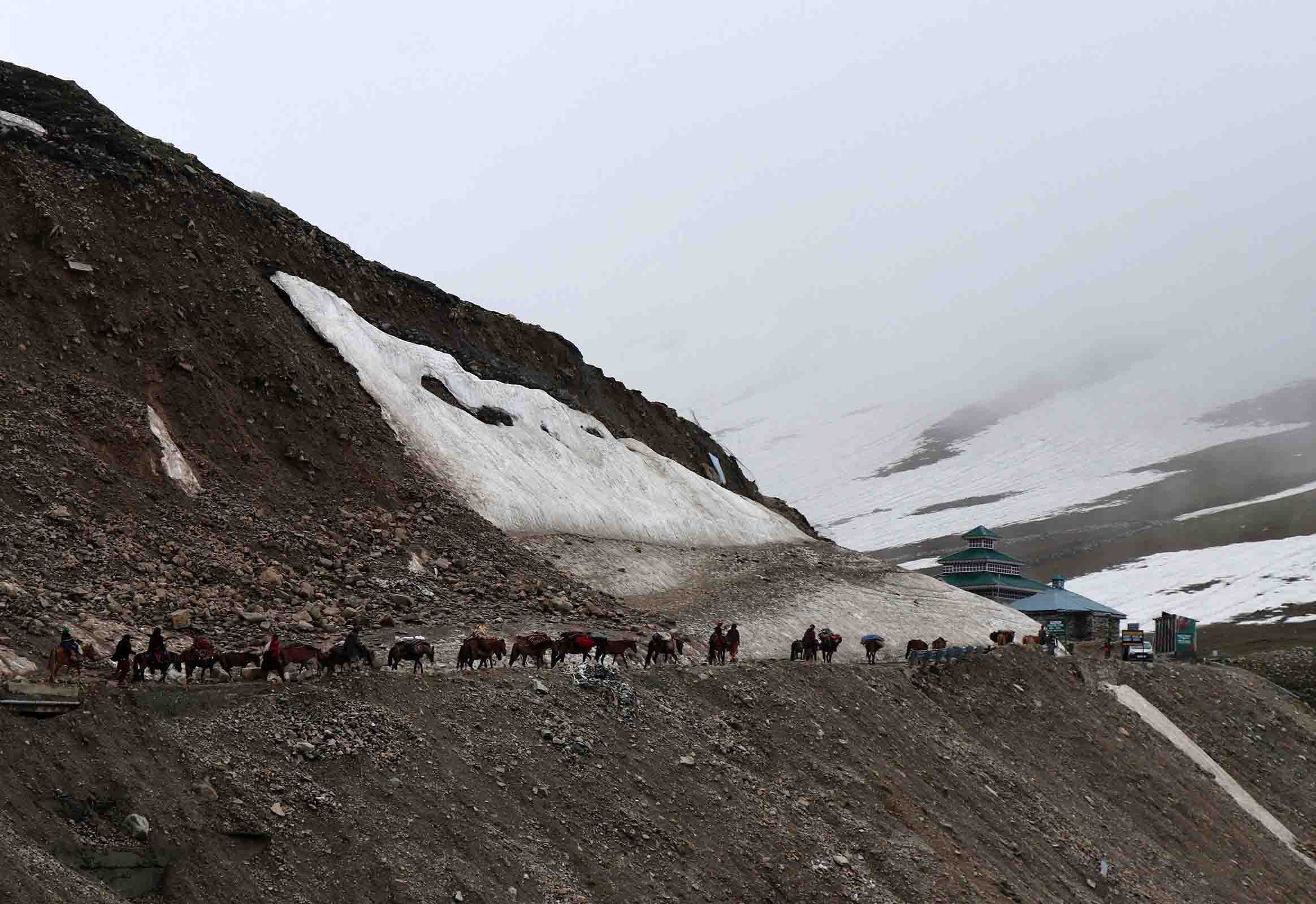
A flock of sheep pass through a road covered with fresh landslide nears Pir Ki Gali. They have been on the road since last four days. The journey is tiring and dangerous as they the herd has to traverse a snow-covered damaged road. The herdsmen have historically used the same track for their movement between Poonch and Kashmir. The building in the photograph is a shrine. It was already there but in the last few years, people have donated immensely to make it one of the towering structures on the historic road. KL Image: Bilal Bahadur
Apart from some business, the road led to revival of the old relations and new marriages. Almost 500marraiges have taken places between Pir Panchal Valley belts and parts of south Kashmir since the Mughal Road was thrown open.

Part of the ascend to the Pir Ki Gali from both sides is having countless small and major glaciers. In this photograph, a flock is moving near a glacier that lines the Mughal Road. KL Image: Bilal Bahadur
As I met the first batch of nomads reaching Pir Ki Gali after a difficult journey through melting snow, landslides, roadblocks and other hurdles thrown in their way by mother nature, they looked exhausted and relaxed at the same time. They said their arrival was delayed because of the lockdown.
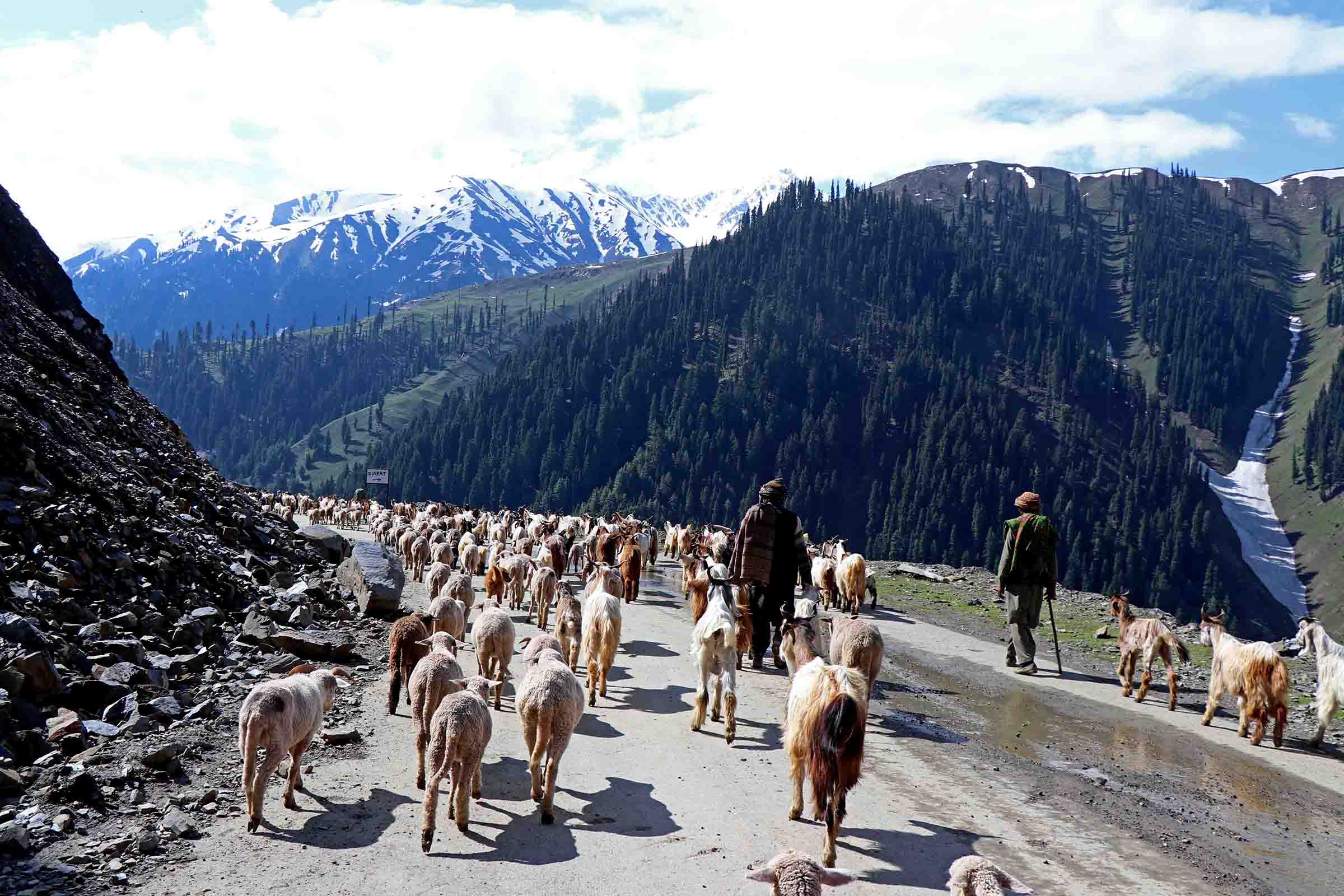
For the herdsmen, it is easier to move and rest once they come down from the Pir Ki Gali area. This photograph shows a herd somewhere in between Pir Ki Gali and Heerpora. KL Image: Bilal Bahadur
The entire road is laced with fascinating tourist spots. It also moves through a wildlife sanctuary where Markhor is abundant.
Unlike all earlier years, this road remained busy since March. A number of people working in the private and unorganised sector in Kashmir choose yo trek the road to reach home during the lockdown.
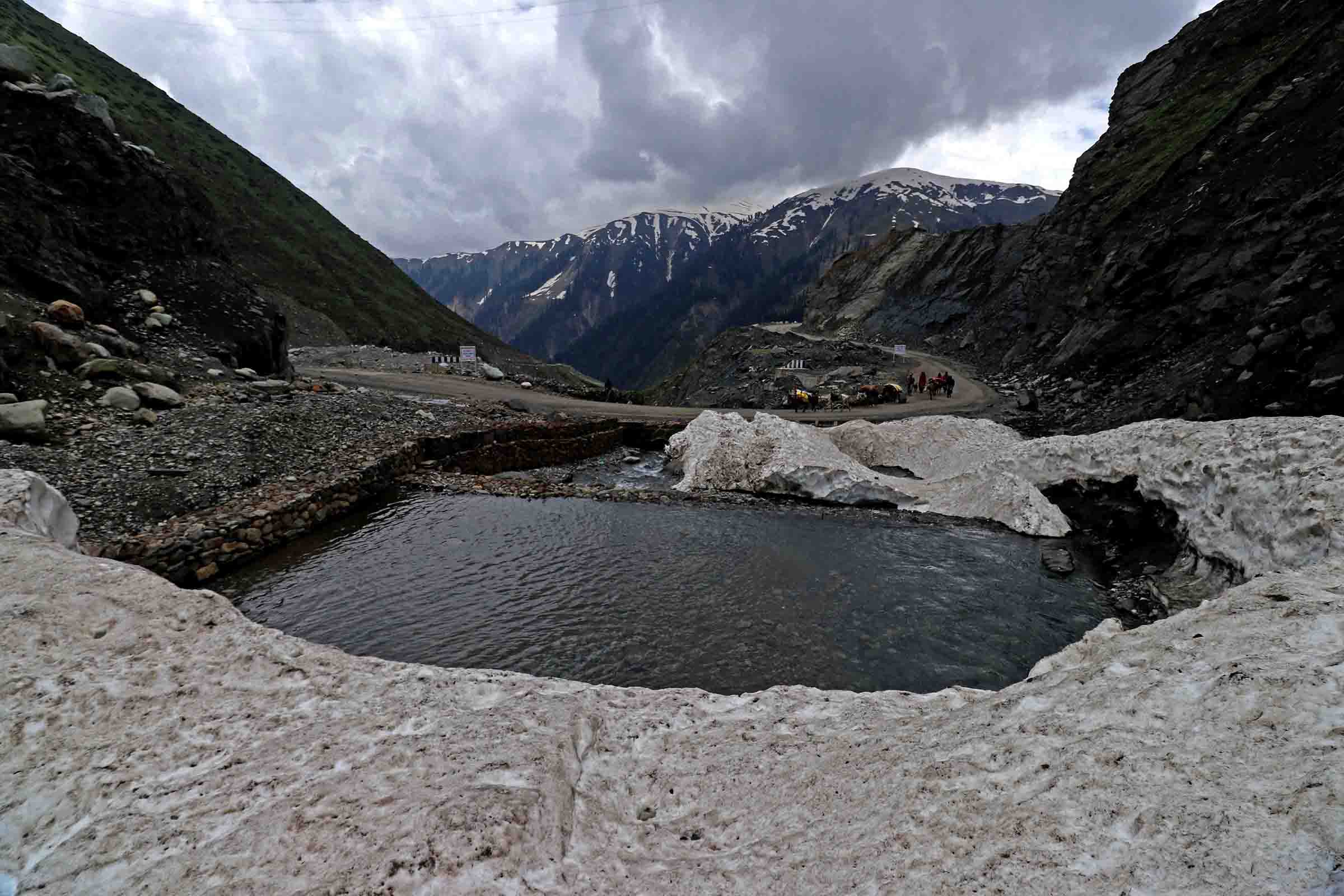
The area offers the best and the cleanest water aviliabkle in Kashmir. This photograph shows a glacier melting on the road. People usually spend a lot of time near this spot for selfies and quenching their thirst. KL Image: Bilal Bahadur
from Kashmir Life https://ift.tt/2XsfamF
via IFTTThttps://kashmirlife.net
No comments:
Post a Comment